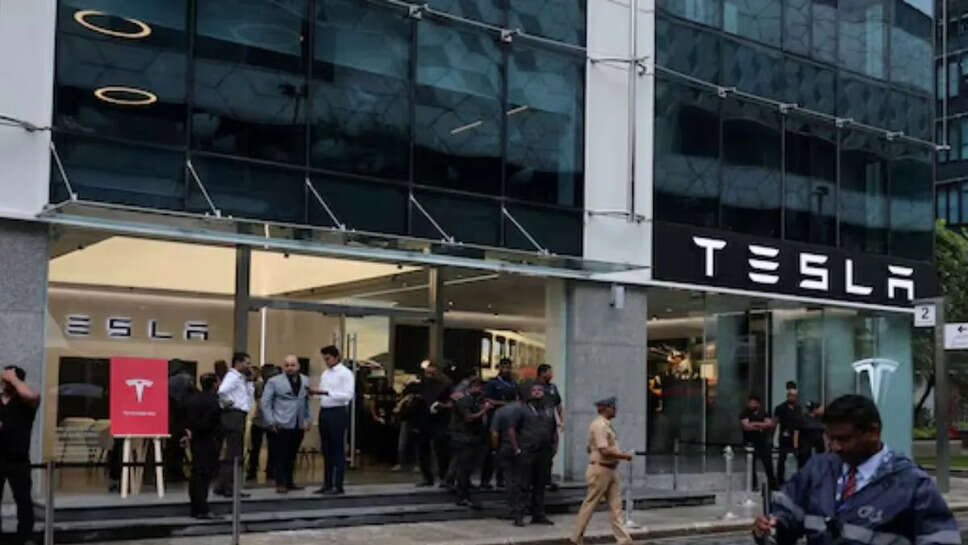“Musk’s Visit Highlights EV Policy Shift — Yet Local Tesla Manufacturing Still Far Off

Elon Musk’s visit to India stirred major excitement around Tesla’s long-awaited entry into the country. But contrary to speculation, the tech billionaire has held back from committing to a local manufacturing unit. While many hoped Musk would announce a Tesla Gigafactory under the “Make in India” initiative, the reality is more tempered. Instead, Tesla seems to be pursuing a more cautious, phased approach: start by selling imported models in limited volume, build brand familiarity, and explore possibilities for future local assembly.
Why There’s No Tesla Factory—Yet
Setting up a manufacturing plant is no small task, and Tesla isn’t quite ready to make that leap in India. The company’s hesitation stems from a mix of regulatory uncertainty, high investment requirements, and the lack of a mature EV ecosystem in the country. India’s electric vehicle market is still evolving, and while the government is offering policy support, Tesla appears to be waiting for demand to scale up before it fully commits. For now, Tesla plans to import vehicles—starting with the Model Y—from its Shanghai facility.
Tesla Showroom in Mumbai: First Step in a Long Journey
As a first major move, Tesla has opened its maiden Experience Centre in Mumbai. Located in a prime commercial hub, the centre showcases the Model Y and offers test drives for potential buyers. It also features an EV charging setup and service infrastructure. This marks a significant milestone as Tesla begins its journey in the Indian market—not through a factory, but through direct consumer access.
Make in India on Hold, But ‘Sell in India’ Very Much On
Despite skipping manufacturing for now, Tesla has made it clear that it sees India as a priority market. The company is testing waters with a few thousand imported units, gauging customer appetite for its premium EVs. By using this initial phase as a learning experience, Tesla can adjust pricing, infrastructure, and service strategies. If the numbers make sense, the company may later scale up operations, potentially even consider local assembly partnerships.
India’s High Duties: A Stumbling Block
One of the primary reasons Tesla hasn’t taken the plunge into Indian manufacturing is the high import duty on vehicles. The Indian government has tried to strike a balance—offering some duty reductions for companies willing to invest locally—but Musk seems to prefer seeing real-world demand before sinking hundreds of millions into a facility. The policy tightrope continues, as Tesla negotiates its way around these tariffs.
Tesla’s Strategy: Cautious Entry Over Risky Expansion
Tesla’s approach to India mirrors its expansion playbook in other emerging markets. Rather than rushing into expensive, resource-intensive projects, it prefers to enter with low-risk imports, build a market base, and then make bolder moves. The company is likely watching how demand for the Model Y pans out before deciding on any deeper involvement in India’s EV manufacturing landscape.
What the Future Might Look Like
If demand takes off, Tesla could consider setting up an assembly line or working with Indian suppliers for parts and components. India has a large pool of potential partners in electronics, batteries, and automotive parts. This could offer Tesla a chance to reduce costs while satisfying local value-addition requirements. It’s a long-term play, but not an impossible one.
Public Sentiment and Political Push
Local leaders, especially from states like Maharashtra and Gujarat, have publicly invited Tesla to invest. They’ve dangled offers of land, subsidies, and logistical support. Politically, the presence of Tesla would be a boost for India’s EV and sustainability image. But without clear signs from Tesla, it remains just a hopeful proposition.
Charging Infrastructure: Tesla Building Slowly
Another critical factor is infrastructure. India’s EV charging grid is still in the early stages of development. Tesla is setting up some superchargers in select metro cities, but it will take time to establish a reliable network nationwide. Without this backbone, scaling up sales would be challenging.
Tesla’s Market Fit: Premium EV in a Price-Sensitive Country
India’s EV market is currently led by affordable models from homegrown brands. Tesla’s vehicles, being in the luxury segment, cater to a niche demographic. The initial target is expected to be tech-savvy, eco-conscious, upper-income buyers in major cities. This limits the sales potential in the short term but gives Tesla a foothold among influential early adopters.
It’s a Start, Not a Finish Line
Tesla’s India strategy is best described as cautious optimism. The company isn’t betting big on India just yet, but it’s also not walking away. By starting with imports, focusing on premium buyers, and slowly building infrastructure, Tesla is laying the groundwork for a potential long-term presence.
While “Made in India” might still be years away, “Made for India” is already underway. Whether this turns into a manufacturing success story depends on how the market, policies, and Tesla’s internal priorities evolve. For now, the company is taking one careful step at a time—and watching closely how India responds.
.jpg)